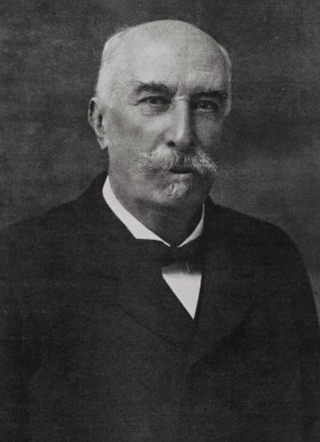
Giovanni Giolitti was an Italian statesman. He was the Prime Minister of Italy five times between 1892 and 1921. After Benito Mussolini, he is the second-longest serving Prime Minister in Italian history. A prominent leader of the Historical Left and the Liberal Union, he is widely considered one of the most powerful and important politicians in Italian history; due to his dominant position in Italian politics, Giolitti was accused by critics of being an authoritarian leader and a parliamentary dictator.

The March on Rome was an organized mass demonstration and a coup d'état in October 1922 which resulted in Benito Mussolini's National Fascist Party (PNF) ascending to power in the Kingdom of Italy. In late October 1922, Fascist Party leaders planned an insurrection to take place by marching on the capital. On 28 October, the fascist demonstrators and Blackshirt paramilitaries approached Rome; Prime Minister Luigi Facta wished to declare a state of siege, but this was overruled by King Victor Emmanuel III, who, fearing bloodshed, persuaded Facta to resign by threatening to abdicate. On 30 October 1922, the King appointed Mussolini as Prime Minister, thereby transferring political power to the fascists without armed conflict. On 31 October the fascist blackshirts paraded in Rome, while Mussolini formed his coalition government.
The Treaty of London or the Pact of London was a secret agreement concluded on 26 April 1915 by the United Kingdom, France, and Russia on the one part, and Italy on the other, in order to entice the latter to enter World War I on the side of the Triple Entente. The agreement involved promises of Italian territorial expansion against Austria-Hungary, the Ottoman Empire and in Africa where it was promised enlargement of its colonies. The Entente countries hoped to force the Central Powers – particularly Germany and Austria-Hungary – to divert some of their forces away from existing battlefields. The Entente also hoped that Romania and Bulgaria would be encouraged to join them after Italy did the same.
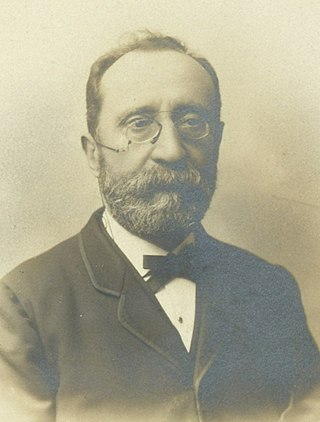
Paolo Boselli was an Italian politician who served as the 34th prime minister of Italy during World War I.
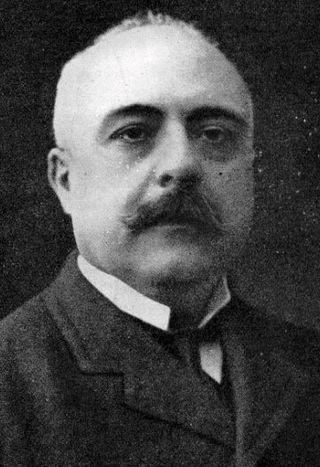
Antonio Salandra was a conservative Italian politician who served as the 21st prime minister of Italy between 1914 and 1916. He ensured the entry of Italy in World War I on the side of the Triple Entente to fulfil Italy’s irredentist claims.

Paolo Camillo Thaon, Marquess of Revel, latterly titled with the honorary title of 1st Duke of the Sea, was an Italian admiral of the Regia Marina during World War I and later a politician.
Radiosomaggismo describes a brief period of popular demonstrations in a number of Italian cities in May 1915, demanding the country’s entry into the First World War.
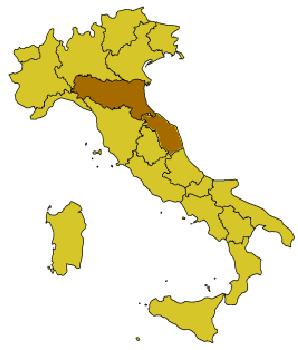
Red Week was the name given to a week of unrest which occurred from 7 to 14 June 1914. Over these seven days, Italy saw widespread rioting and large-scale strikes throughout the Italian provinces of Romagna and the Marche.

The Allies of World War I, Entente Powers, or Allied Powers were a coalition of countries led by France, the United Kingdom, Russia, Italy, Japan, and the United States against the Central Powers of Germany, Austria-Hungary, the Ottoman Empire, Bulgaria, and their colonies during the First World War (1914–1918).
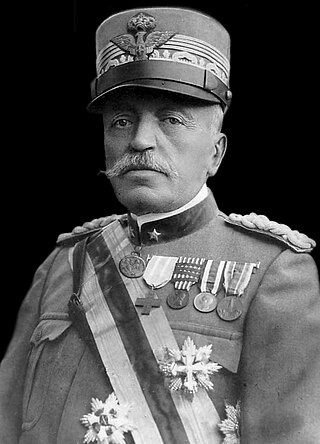
Marshal of Italy Luigi Cadorna, was an Italian general, Marshal of Italy and Count most famous for being the Chief of Staff of the Italian Army from 1914-1917 of World War I.

This article is about Italian military operations in World War I.

The Ministry of the Colonies was the ministry of the government of the Kingdom of Italy responsible for the governing of the country's colonial possessions and the direction of their economies. It was set up on 20 November 1912 by Royal Decree n. 1205, turning the Central Direction of Colonial Affairs within the Ministry for Foreign Affairs into a separate ministry. Royal Decree n. 431 of 8 April 1937 renamed it the Ministry of Italian Africa after the Second Italo-Ethiopian War, which resulted in the Italian annexation of the Ethiopian Empire and the birth of Italian East Africa. It was suppressed on 19 April 1953 by law n. 430.
Events from the year 1916 in Italy.
Events from the year 1915 in Italy.

The Liberal Union, simply and collectively called Liberals, was a political alliance formed in the first years of the 20th century by the Italian Prime Minister and leader of the Historical Left Giovanni Giolitti. The alliance was formed when the Left and the Right merged in a single centrist and liberal coalition which largely dominated the Italian Parliament.
Events from the year 1914 in Italy.
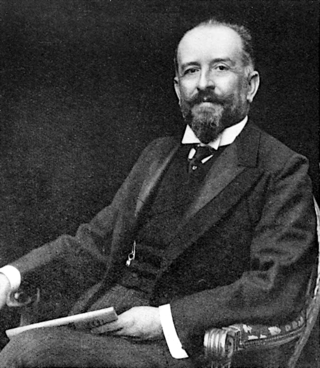
Antonino Paternò Castello, Marquess of San Giuliano, was an Italian diplomat and Minister of Foreign Affairs.

Italy entered into the First World War in 1915 with the aim of completing national unity: for this reason, the Italian intervention in the First World War is also considered the Fourth Italian War of Independence, in a historiographical perspective that identifies in the latter the conclusion of the unification of Italy, whose military actions began during the revolutions of 1848 with the First Italian War of Independence.

The Salandra II government of Italy held office from 5 November 1914 until 18 June 1916, a total of 591 days, or 1 year, 7 months and 13 days.

In Italy as in other countries the outbreak of the First World War created new opportunities and channels for propaganda. The unusual circumstances of Italy’s entry into the war meant that the government played no active role in propaganda work during the early years of the war. Public opinion was served by a pro-war nationalist press that avoided the unpleasant details of life on the front, while the army regarded discipline as more important than morale, leaving soldiers’ welfare to the Church. The momentous Italian defeat at Caporetto saw an end to this laissez-faire approach and the beginnings of a more centralised and managed effort to motivate the public and the army to the national cause.














